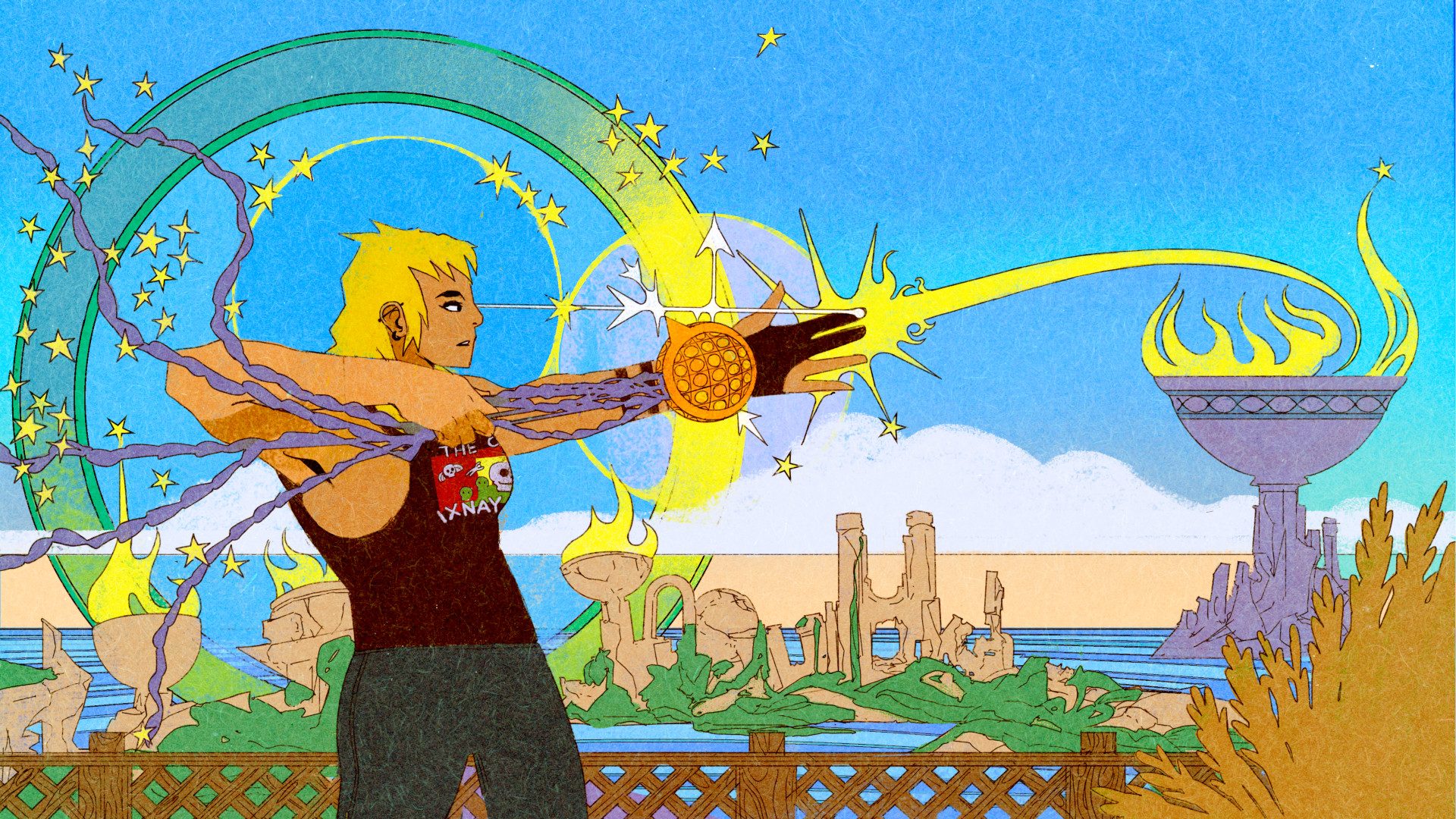Are games art?
Forget what the industry thinks - we scooped our answers straight out of the art community
One of Rachel’s favorite game related works is by Cory Arcangel, who’s work has appeared in major galleries in New York and abroad. Arcangel’s “Super Mario Clouds ” is a hack of a Super Mario Bros. cartridge which removes everything from the game except for the clouds.
“The fact that he's showing them in these institutions, I think, also kind of relegates what he's doing into the world of art, rather than videogames... What these games represent now, to the culture... their meanings are a lot deeper than what their originators planned in the '70s,” explained Rachel as she pointed to Arcangel’s work in a glossy contemporary art book.
Arcangel similarly hacked Space Invaders into “Space Invader” – with just one, lonely invader. While these don’t quite qualify as artgames, being that the “game” aspect is mostly lost, we agree with Rachel that the thinking – the idea of taking these cultural icons and formulating ways to present them to the art world – is spot on.

Above: The Colour Game is a contemporary interactive installation, or, as its name hints, a game
Joe McKay is another artist at the forefront of the artgame movement. His work repurposes, rearranges, and recontextualizes bits of technology – his entire collection in one room would look something like a Circuit City that had been trashed by burglars and inhabited by a poltergeist. That’s not a bad thing.
One of his earlier interactive pieces is “Audio Pong,” a remake of Pong controlled by the players’ vocal chords. The louder you speak, the higher your paddle goes – silence causes it to default at the bottom. In 2003 he exhibited “The Colour Game,” which pits two players against each other in a race to match the RGB values of a projected color shape using three mechanical sliders. The result is reminiscent of Rothko’s entrancing color fields, except that the viewer is invited to participate in the creation of the work, rather than merely observe.
Sign up to the GamesRadar+ Newsletter
Weekly digests, tales from the communities you love, and more
As intriguing as McKay’s work is, unless you can make it to an exhibition, you’ll probably never play one of his games. Installations like McKay’s are a great example of how games have broken into the art world, but are not the only examples of games striving toward fine art - many can be played in your living room.



